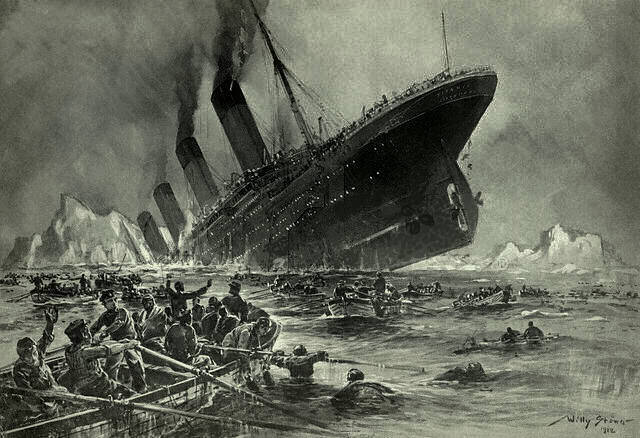3.2.5 The Titanic and the Moon

The sinking of the Titanic. Engraving by Willy Stöwer, 1912.
Read: Did the Moon Contribute to the Sinking of the Titanic? // NASA
Guided Questions:
- What hypothesis do the Texas State University researchers propose?
- Is this proposition falsifiable? What information would allow you to test their hypothesis?
Read: No, the Moon Did Not Sink the Titanic // The Atlantic
Guided Questions:
- Does Wallace believe the lunar cycle theory is correct?
- How does Wallace test whether the lunar cycle theory explains, by and large, the known facts about the Titanic’s sinking due to icebergs in the North Atlantic?
- Which theory is more convincing to you? Is other data needed to test the lunar cycle theory?
Photo: “Engraving by Willy Stöwer: Der Untergang der Titanic,” Titanic sinking (1912). Magazine Die Gartenlaube. Wikimedia user Canoe1967. Public domain.


